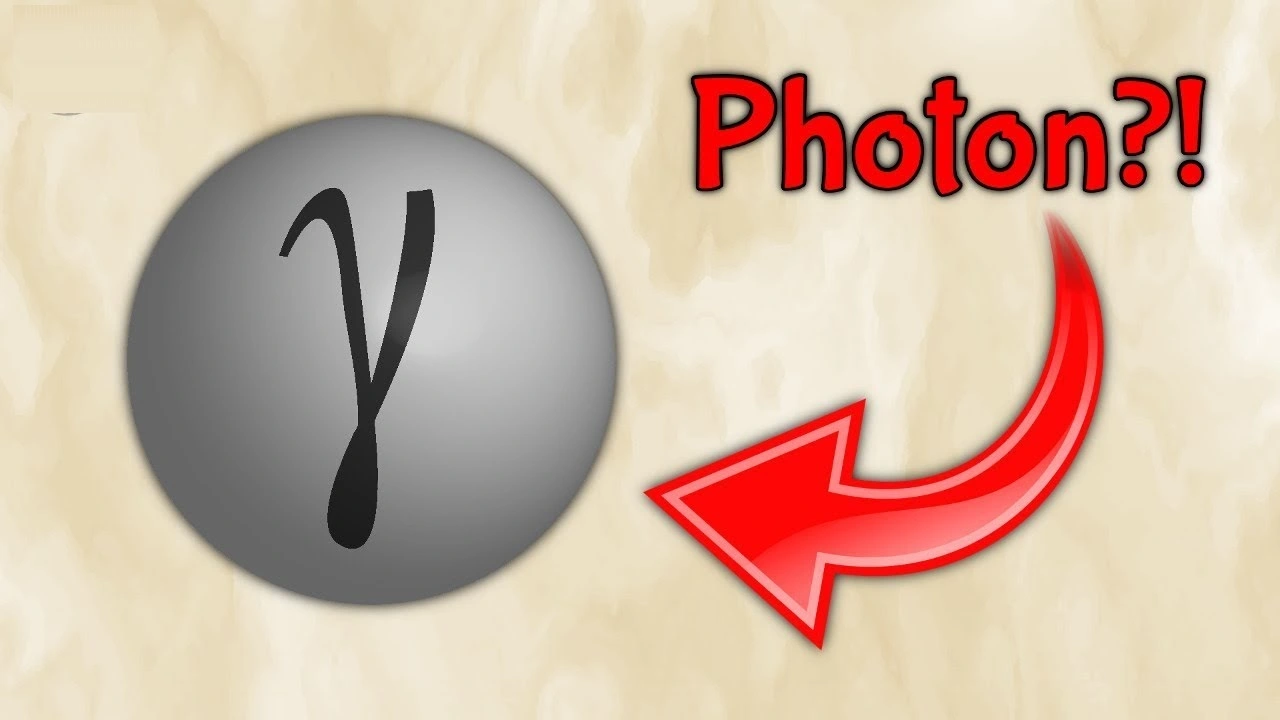
What is Photon?
Light is a very useful thing. Thanks to light, we see everything in this world in general, street lights turn on on time, and soap bubbles have beautiful stains. But what the light is made of is, of course, an interesting question.
Photon Definition
A photon is a discrete burst of energy associated with electromagnetic radiation (light). The photon has energy E, which is proportional to the frequency v, radiation: E = hν, where H is Planck’s constant.
Also Known As: quanta
Specifications of Photons
Photons are unique in that they have the characteristics of both particles and waves at the same time. For students, it remains unclear whether the photon is a particle that moves along the wave pattern or the waves break into particles. Most scientists simply accept the photon as a unique package of energy that has the characteristics of both waves and particles.
Photon properties
- Behaves like particles and waves at the same time
- Moving at a constant speed , s = 2.9979 x 10 8 m / s (that is, “the speed of light”), in empty space
- Has zero mass and rest energy
- Carries energy and momentum, which are also related to the frequency ( nu) and wavelength (lambda) of the electromagnetic wave, as expressed by the equation E = h Nu and p = h / lambda .
- Can be destroyed / created when radiation is absorbed / emitted.
- I can have particles such as interactions (i.e. collisions) with electrons and other particles, such as in the Compton effect , in which a particle of light collides with atoms, causing the release of electrons.
Energy and momentum of a photon
Each photon carries a certain amount of energy. This amount is called the energy of the photon .
| Photon energy (Planck-Einstein ratio) E = hv E – photon energy [J] h – Planck’s constant h = 6.6 × 10 -34 J × s ν – photon frequency [Hz] |
The momentum of a photon is related to energy as follows:
| The ratio of momentum and photon energy p = E / c p – photon momentum [(kg * m) / s] E – photon energy [J] s – speed of light [m / s] c = 3 * 10 8 m / s |
Substitute instead of E the photon energy formula: p = hv / c
And instead of frequency, the formula v = c / λ: p = hc / cλ
We reduce the speed of light and get the momentum formula.
| Photon momentum p = h / λ p – photon momentum [(kg * m) / s] h – Planck’s constant h = 6.6 × 10 -34 J × s λ – wavelength [m] |
Light pressure
The Lorentz force is the force acting on a particle moving in a magnetic field.
If we consider light as a collection of photons, then we can assume that light, like any other electromagnetic wave, can exert pressure. This is precisely the assumption made by James Maxwell in 1873 and was right.
Let N photons fall on the surface of an absolutely black body with area S perpendicular to it every second . Each photon has a momentum p = hv / c.
The total impulse received by the body surface is p = hv / c * N.
It is known from mechanics that pressure is the ratio of the force to the area on which this force acts: p = F / S.
Do not confuse: impulse and pressure are denoted by the same letter, but the values are different!
Newton’s second law in impulse form has the form F = p * Δt, where p is the momentum, and Δt is the time interval during which the momentum changes by the value of p.
Then the light pressure is determined as follows: p = F / S = (p * Δt) / S = hvN / Sc.
When light falls on a mirror surface, the impact of a photon is considered absolutely elastic, therefore, the change in momentum and pressure is 2 times greater than when falling on a black surface (in this case, the impact is inelastic, since the black color absorbs a photon).
The existence of light pressure predicted by Maxwell was experimentally confirmed by the physicist P.N. Lebedev, who in 1900 measured the pressure of light on solids using a sensitive torsion balance. The theory and experiment coincided. The light pressure was ≈ 4.10 -6 Pa.
Lebedev’s experiments are experimental proof of the fact: photons have momentum .
Photo effect
Another important phenomenon that confirms the corpuscular nature of light is the photoelectric effect . For now, we will analyze only the principle of this phenomenon, and leave complex mathematics for another time.
The below image shows an experimental setup for studying the photoelectric effect.

The installation is a glass vacuum cylinder with two metal electrodes, to which a voltage is applied. One of the electrodes is illuminated through a quartz window with monochromatic light (monochromatic light is light whose wavelength is constant). Under the action of photons, the so-called photoelectrons are knocked out of the negatively charged electrode. They are attracted to the positive electrode and a photocurrent is formed.
Numerous experimenters have established the basic laws of the photoelectric effect:
- The maximum kinetic energy of photoelectrons increases linearly with an increase in the frequency of light ν and does not depend on its intensity.
- For each substance there is the so-called red border of the photoelectric effect, i.e., the lowest frequency ν min , at which the external photoeffect is still possible.
- The number of photoelectrons ejected from the cathode by light in 1 s is directly proportional to the light intensity.
- The photoelectric effect is practically inertialess, the photocurrent appears instantly after the start of illumination of the cathode, provided that the frequency of light ν> ν min .
Einstein studied the photoelectric effect and came to the conclusion that light has a discontinuous structure, that is, it consists of photons.
The photoelectric effect is used, for example, in light sensors. Street lights equipped with light sensors turn on automatically at a certain level of natural light.
Technical application of photons
An important technical device that uses photons is a laser . Lasers are used in many areas of technology: with their help, metals are cut, boiled and melted, and ultrapure metals are obtained. Many precise physical instruments are based on lasers – for example, seismographs. Well, you are probably familiar with laser printers and pointers.
Many random number generators are based on determining the location of photons . To generate one bit of a random sequence, a photon is directed to a beam splitter – a piece that splits light into two streams.
For any photon, there are only two possibilities, and with the same probability: to pass the beam splitter or to be reflected from its edge. Depending on whether the photon passed through the beam splitter or not, the next bit in the sequence is 0 or 1.
More knowledge related to Photon
Wave-corpuscle duality
A question that no one can answer you unambiguously: “Is light a particle or a wave?” This is a very difficult question that scientists have been trying to answer for a long time.
In the 17th century, Isaac Newton proposed a model in which light is a stream of tiny corpuscles (particles). This made it possible to simply explain many of the characteristic properties of light. For example, the straightness of light rays and the law of reflection, according to which the angle of reflection of light is equal to the angle of incidence. This correlates with the law of conservation of momentum, which the particles obey.
But there are such phenomena as interference and diffraction. They do not fit into the corpuscular theory at all.
Interference and diffraction
Interference is a phenomenon in which two waves overlap and form the so-called “highs” and “lows” – the lightest and darkest areas. It looks like this:

In real life, you have seen this, for example, if you saw spilled gasoline or blowing soap bubbles. This is all a consequence of light interference.
Diffraction is inextricably linked with the phenomenon of interference. Moreover, the very phenomenon of diffraction is often interpreted as a case of interference of waves limited in space.
Diffraction is the phenomenon of bending around obstacles that arise in front of the wave. Due to diffraction, light can bend around an obstacle and hit where, in terms of geometry, there should be a shadow.
In the 19th century, the wave theory of light appeared, which explained diffraction and interference. According to this theory, light is a special case of electromagnetic waves, that is, the process of propagation of an electromagnetic field in space.
Wave optics generally seemed at that time some kind of miracle, because it explained not only those phenomena that were not explained by the corpuscular theory, but in general all the light effects known at that time. Even the laws of geometric optics could be proven through wave optics.
It would seem, well, everything then – the light has a wave nature, no particles for you, we diverge. But it was not there! Already at the beginning of the 20th century, the corpuscular theory of light gained relevance again, as scientists discovered phenomena that could not be explained using the wave theory. For example, the pressure of light and the photoelectric effect, which we will talk about later.
Within the framework of the corpuscular theory, these phenomena were perfectly explained, and the corpuscles (particles) of light were even called photons .
An interesting situation developed – in parallel there were two serious scientific theories, each of which explained some properties of light, but could not explain others. Together, these two theories complement each other perfectly. This is how we come to the concept of the wave-particle nature of light.
Wave-corpuscle duality is a physical principle stating that any object of nature can behave both as a particle and as a wave.
Related Articales
Recently Posted
-
भगवान गौतम बुद्ध जीवन परिचय | Gautam Buddha in Hindi
December 15, 2022. -
कार्बन के अपररूप Allotropes of Carbon in Hindi
November 5, 2022. -
मिश्र धातु किसे कहते हैं? उपयोग, नाम, गुण Alloy in Hindi
July 27, 2022. -
गलनांक किसे कहते हैं? परिभाषा, उदाहरण Melting Point in Hindi
July 20, 2022. -
परिमाप किसे कहते हैं? Perimeter in Hindi
July 19, 2022.




